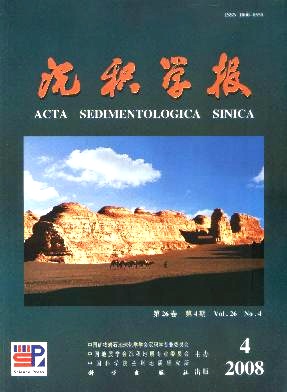Contrasting Biomarker Features of Two Types of Jurassic Mudstones with Different Organic Matter Contents in the Northern Qaidam Basin
- Received Date: 1900-01-01
- Rev Recd Date: 1900-01-01
- Publish Date: 2008-08-10
-
Key words:
- biomarker /
- Jurassic mudstone /
- source rock /
- oilsource correlation /
- the northern Qaidam Basin
Abstract: Two types of Jurassic mudstones with different total organic contents (TOC) from the northern Qaidam Basin were analyzed for biomarker features in this study. It is showed that these two types of mudstones have pronounced different biomarker compositions. The mudstones with high TOC contents show similar features to other Jurassic source rocks and their derived oils in the western China’s Jurassic petroliferous basins. In contrast, as to the mudstones with low TOC contents, it is characterized by an nalkane envelope that peaks at a low carbon number (e.g., nC16, nC17), Pr/Ph around 1.0, abundance of tricyclic terpane and gammacerane, and detection of 25norhopane series in two samples. Combined with organic petrographic features of mudstones, it is implied that the biomarkers reflect depositional environments and bioprecursors of the mudstones. Bioprecursors of high TOC mudstones consist mainly of algae, cutinites and sporophytes, under relatively anaerobic situations. As to the low TOC mudstones, organic maceral composition is composed mainly of mineral bituminous matrix, which comes from biodegradation of microalga by microbe under relatively more anaerobic conditions. Furthermore, based on a comparison between biomarkers of mudstones analyzed in this study and of presently explored oils, the oil source in the study area was discussed.
| Citation: | YANG Shao-yong. Contrasting Biomarker Features of Two Types of Jurassic Mudstones with Different Organic Matter Contents in the Northern Qaidam Basin[J]. Acta Sedimentologica Sinica, 2008, 26(4): 688-696. |






 DownLoad:
DownLoad: